It was in the XVI Century that painting started becoming somewhat independent in England. The rich clientele of the capital attracted many talents, and brought the best artists from the continent, amongst which portraitists. 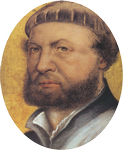 One of the first was the German Hans Holbein, called over to London by Thomas More to carry out his portrait. Holbein moved to Chelsea, which at the time was a separate village compared to London. He carried out portraits for ambassadors, rich merchants, and the middle-class. A particularly beautiful one is that of Edward VI as a child.
One of the first was the German Hans Holbein, called over to London by Thomas More to carry out his portrait. Holbein moved to Chelsea, which at the time was a separate village compared to London. He carried out portraits for ambassadors, rich merchants, and the middle-class. A particularly beautiful one is that of Edward VI as a child. 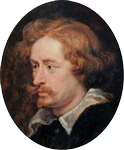 In the meantime, Flemish artists had arrived, such as Antoon Van Dyck, who set themselves up in the Blackfriars neighbourhood. Van Dyck later became the top painter of the English court, and painted Charles I of House Stuart and his family members. The triple portrait of Charles I has become particularly famous.
In the meantime, Flemish artists had arrived, such as Antoon Van Dyck, who set themselves up in the Blackfriars neighbourhood. Van Dyck later became the top painter of the English court, and painted Charles I of House Stuart and his family members. The triple portrait of Charles I has become particularly famous.
 One of the first was the German Hans Holbein, called over to London by Thomas More to carry out his portrait. Holbein moved to Chelsea, which at the time was a separate village compared to London. He carried out portraits for ambassadors, rich merchants, and the middle-class. A particularly beautiful one is that of Edward VI as a child.
One of the first was the German Hans Holbein, called over to London by Thomas More to carry out his portrait. Holbein moved to Chelsea, which at the time was a separate village compared to London. He carried out portraits for ambassadors, rich merchants, and the middle-class. A particularly beautiful one is that of Edward VI as a child.  In the meantime, Flemish artists had arrived, such as Antoon Van Dyck, who set themselves up in the Blackfriars neighbourhood. Van Dyck later became the top painter of the English court, and painted Charles I of House Stuart and his family members. The triple portrait of Charles I has become particularly famous.
In the meantime, Flemish artists had arrived, such as Antoon Van Dyck, who set themselves up in the Blackfriars neighbourhood. Van Dyck later became the top painter of the English court, and painted Charles I of House Stuart and his family members. The triple portrait of Charles I has become particularly famous.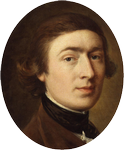 Thomas Gainsborough moved to London in 1774 and lived in Hatton Garden, in the North West of the City. At a later time, he went to live in Schomberg House, in Pall Mall, before deciding to move permanently to Bath. He painted the Queen and King, but the latter was forced to nominate his rival Joshua Reynolds as court painter. Gainsborough was also a great painter of landscapes and is considered the forefather of eighteenth-century landscape portraits.
Thomas Gainsborough moved to London in 1774 and lived in Hatton Garden, in the North West of the City. At a later time, he went to live in Schomberg House, in Pall Mall, before deciding to move permanently to Bath. He painted the Queen and King, but the latter was forced to nominate his rival Joshua Reynolds as court painter. Gainsborough was also a great painter of landscapes and is considered the forefather of eighteenth-century landscape portraits. 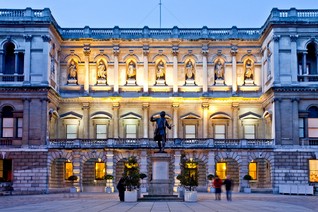
 Joshwa Reynolds settled in London in 1740, in a workshop near Leicester Square. He actively attended the group which gravitated around the academic Samuel Johnson, whom he had made a portrait of, which is now exhibited at the Royal Academy of Arts, destined to encourage young talents. He carried out many portraits, which were much sought after, in spite of his preference for historical paintings. In fulfilling some of the portraits, he retrieved the iconographic methods of the past, both those of the Renaissance and those of mythology.
Joshwa Reynolds settled in London in 1740, in a workshop near Leicester Square. He actively attended the group which gravitated around the academic Samuel Johnson, whom he had made a portrait of, which is now exhibited at the Royal Academy of Arts, destined to encourage young talents. He carried out many portraits, which were much sought after, in spite of his preference for historical paintings. In fulfilling some of the portraits, he retrieved the iconographic methods of the past, both those of the Renaissance and those of mythology. 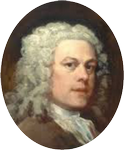 Belonging to the same period, are the works of William Hogarth, who lived for many years in Leicester Square with his wife and who towards the end of his life moved to Chiswick, in a country house which is a small museum today. He made a number of enemies because of the social satire contained in his works. He was formerly an engraver who later became a painter and his works were somewhat the painted transposition of works carried out for Gay, for whom he had performed the illustrations of The Beggar's Opera. His paintings portray the history of the city through images and these still today shape our perception of London in the Eighteenth Century. It is thanks to these images that we know the city, its streets, the social happenings, the crowded festivals, the improvised theatre shows, or the hectic daily life.
Belonging to the same period, are the works of William Hogarth, who lived for many years in Leicester Square with his wife and who towards the end of his life moved to Chiswick, in a country house which is a small museum today. He made a number of enemies because of the social satire contained in his works. He was formerly an engraver who later became a painter and his works were somewhat the painted transposition of works carried out for Gay, for whom he had performed the illustrations of The Beggar's Opera. His paintings portray the history of the city through images and these still today shape our perception of London in the Eighteenth Century. It is thanks to these images that we know the city, its streets, the social happenings, the crowded festivals, the improvised theatre shows, or the hectic daily life. The Eighteenth Century was dominated by the landscape artists, and the views of London and the Thames found themselves competing with seascapes and mountains. This was the period during which Canaletto arrived in London and started painting the capital with his usual detailed precision with landscape hues which were to make him famous. It was Canaletto who gave new drive to other artists and induced them to imitate his work. 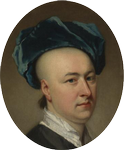 One of his first followers was Samuel Scott, the author of a view of London Bridge from 1745, a portrait of Westminster Hall, which is found at the British Museum, and of the river Fleet, preserved at the Guildhall Art Gallery.
One of his first followers was Samuel Scott, the author of a view of London Bridge from 1745, a portrait of Westminster Hall, which is found at the British Museum, and of the river Fleet, preserved at the Guildhall Art Gallery.
 One of his first followers was Samuel Scott, the author of a view of London Bridge from 1745, a portrait of Westminster Hall, which is found at the British Museum, and of the river Fleet, preserved at the Guildhall Art Gallery.
One of his first followers was Samuel Scott, the author of a view of London Bridge from 1745, a portrait of Westminster Hall, which is found at the British Museum, and of the river Fleet, preserved at the Guildhall Art Gallery. The London scenery inspired many great English painters, although never becoming the exclusive subject for any of them, as far back as the beginning of the previous century. 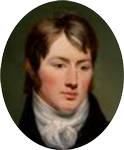 Thus to John Constable, who was born in 1776 in a village in Suffolk and lived in London after his wedding at St Martin-in-the-Fields in 1816, we owe the depiction of Hampstead Heath and the opening of Waterloo bridge,
Thus to John Constable, who was born in 1776 in a village in Suffolk and lived in London after his wedding at St Martin-in-the-Fields in 1816, we owe the depiction of Hampstead Heath and the opening of Waterloo bridge, 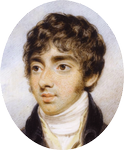 as well as many other landscapes, portrayed in the Romantic fashion, held at the Victoria & Albert Museum. The watercolourist Thomas Girtin, born in Southwark in 1775, has left us with The White House at Chelsea, a beautiful view of the Thames with windmills on its banks, whereas
as well as many other landscapes, portrayed in the Romantic fashion, held at the Victoria & Albert Museum. The watercolourist Thomas Girtin, born in Southwark in 1775, has left us with The White House at Chelsea, a beautiful view of the Thames with windmills on its banks, whereas
 Thus to John Constable, who was born in 1776 in a village in Suffolk and lived in London after his wedding at St Martin-in-the-Fields in 1816, we owe the depiction of Hampstead Heath and the opening of Waterloo bridge,
Thus to John Constable, who was born in 1776 in a village in Suffolk and lived in London after his wedding at St Martin-in-the-Fields in 1816, we owe the depiction of Hampstead Heath and the opening of Waterloo bridge,  as well as many other landscapes, portrayed in the Romantic fashion, held at the Victoria & Albert Museum. The watercolourist Thomas Girtin, born in Southwark in 1775, has left us with The White House at Chelsea, a beautiful view of the Thames with windmills on its banks, whereas
as well as many other landscapes, portrayed in the Romantic fashion, held at the Victoria & Albert Museum. The watercolourist Thomas Girtin, born in Southwark in 1775, has left us with The White House at Chelsea, a beautiful view of the Thames with windmills on its banks, whereas  Thomas Rowlandson, born in 1756 in Old Jewry in the City, has given us a depiction full of realism representing Smithfield Market, painted around 1816 and kept in the British Museum. He also carried out the portrait of Elephant and Castle and the Vauxhall Gardens, preserved within the Victoria & Albert Museum. Rowlandson was also a caricaturist and illustrator of books.
Thomas Rowlandson, born in 1756 in Old Jewry in the City, has given us a depiction full of realism representing Smithfield Market, painted around 1816 and kept in the British Museum. He also carried out the portrait of Elephant and Castle and the Vauxhall Gardens, preserved within the Victoria & Albert Museum. Rowlandson was also a caricaturist and illustrator of books. William Turner, who was taken under Reynolds' wing, was a precocious painter. At the early age of fifteen he had already carried out a watercolour of Lambeth Palace and a few years later, in 1805, he painted Windsor Castle, which is now considered one of his most important works.
William Turner, who was taken under Reynolds' wing, was a precocious painter. At the early age of fifteen he had already carried out a watercolour of Lambeth Palace and a few years later, in 1805, he painted Windsor Castle, which is now considered one of his most important works. Turner's favourite observation grounds were the banks of the Thames and the painter would spend hours at Chelsea, Hammersmith, and Twickenham taking in the landscapes and painting them.
 London had already been portrayed, albeit with some degree of approximation, in medieval manuscripts. The view that can be found in the manuscript of Matthew Paris, for instance, carried out in 1250 and kept in a specific department of the British Museum, is one of the most famous examples. The depicted places are represented in a rather fantastically-enhanced fashion, however one can recognize St Paul's Cathedral, London Bridge and the Tower, although the latter has been painted on the wrong side of the river. In 1497 some of the first printed layouts of the city were released, where it appears in quite a conventional manner, surrounded by its walls. Inside the British Museum, a miniature of the end of the Fifteenth Century has been preserved, within which some poems by Charles of Orléans have been illustrated through depictions of the Tower and the banks of the Thames.
London had already been portrayed, albeit with some degree of approximation, in medieval manuscripts. The view that can be found in the manuscript of Matthew Paris, for instance, carried out in 1250 and kept in a specific department of the British Museum, is one of the most famous examples. The depicted places are represented in a rather fantastically-enhanced fashion, however one can recognize St Paul's Cathedral, London Bridge and the Tower, although the latter has been painted on the wrong side of the river. In 1497 some of the first printed layouts of the city were released, where it appears in quite a conventional manner, surrounded by its walls. Inside the British Museum, a miniature of the end of the Fifteenth Century has been preserved, within which some poems by Charles of Orléans have been illustrated through depictions of the Tower and the banks of the Thames. 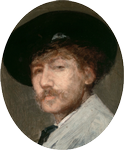 The pre-Raphaelites were not at all interested in landscapes and it was not until the arrival of Whistler that the Thames and London were once again given a place of honour in paintings. Whistler lived at 96, Cheyne Walk, in Chelsea, not far from Carlyle, Swinburne and Meredith. Sitting on those banks, from 1867 onwards, he painted some of his most renowned paintings,
The pre-Raphaelites were not at all interested in landscapes and it was not until the arrival of Whistler that the Thames and London were once again given a place of honour in paintings. Whistler lived at 96, Cheyne Walk, in Chelsea, not far from Carlyle, Swinburne and Meredith. Sitting on those banks, from 1867 onwards, he painted some of his most renowned paintings,  inspired by the river and its bridges, amongst which Battersea Bridge. One of his pupils was Walter Greaves, a young man who built pleasure-watercrafts near Chelsea, and whose painting of the Hammersmith Bridge regatta is now kept at the Tate Gallery. An unequalled painter as far as the realism of the scenes and thorough detail is concerned, was
inspired by the river and its bridges, amongst which Battersea Bridge. One of his pupils was Walter Greaves, a young man who built pleasure-watercrafts near Chelsea, and whose painting of the Hammersmith Bridge regatta is now kept at the Tate Gallery. An unequalled painter as far as the realism of the scenes and thorough detail is concerned, was 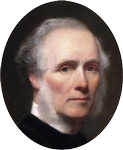 W.P. Frith. The painting depicting Paddington Station in 1862, preserved in the collection of the Royal Holloway College in Surrey, is a precious testimony of the Victorian Age.
W.P. Frith. The painting depicting Paddington Station in 1862, preserved in the collection of the Royal Holloway College in Surrey, is a precious testimony of the Victorian Age. At the end of the Nineteenth Century, Claude Monet and other French painters, who depicted a number of views during their stays in London, greatly influenced English artists. Yet another foreigner of impact was Lucien Pissarro, who was part of the Camden Town group which was formed in 1911 by Walter Sickert. The neo-impressionist painter was the author of the painting Crockers Lane Coldharbour, carried out in 1916, which shows the outskirts of the city. In 1911, S.F. Gore, a pupil of Cézanne, painted the row of houses at Mornington Crescent, near St Pancras. Starting in the Thirties, there began to be a proliferation of genres, schools, and works. In 1937, for instance, the Euston Road School was born, which included the figure of Graham Bell, the author of The Café, held at the Manchester City Gallery. 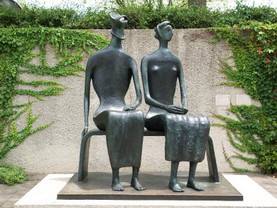 Another painter who was very much tied to the London scenery was Carel Weight, who carried out a painting of the Albert Bridge. A special mention goes to the sculptor and painter
Another painter who was very much tied to the London scenery was Carel Weight, who carried out a painting of the Albert Bridge. A special mention goes to the sculptor and painter 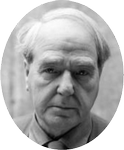 Henry Moore, who poured his powerful originality into his paintings. Especially significant are those belonging to the series dedicated to underground shelters, which depict the inhabitants of London taking shelter in these reinforced areas during air raids.
Henry Moore, who poured his powerful originality into his paintings. Especially significant are those belonging to the series dedicated to underground shelters, which depict the inhabitants of London taking shelter in these reinforced areas during air raids.
 Another painter who was very much tied to the London scenery was Carel Weight, who carried out a painting of the Albert Bridge. A special mention goes to the sculptor and painter
Another painter who was very much tied to the London scenery was Carel Weight, who carried out a painting of the Albert Bridge. A special mention goes to the sculptor and painter  Henry Moore, who poured his powerful originality into his paintings. Especially significant are those belonging to the series dedicated to underground shelters, which depict the inhabitants of London taking shelter in these reinforced areas during air raids.
Henry Moore, who poured his powerful originality into his paintings. Especially significant are those belonging to the series dedicated to underground shelters, which depict the inhabitants of London taking shelter in these reinforced areas during air raids. Amongst the foreign painters who used London as their subject is 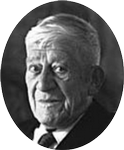 Oskar Kokoschka, author of a painting of Tower Bridge in 1925, as well as Richmond Terrace in 1926, Waterloo Bridge and a number of views of the Thames. On the subject of landscape views, in 1939, upon the suggestion of the Count of Cork, the Royal Society of Marine Artists was founded, gathering artists specialized in seascape portraits. All the paintings, carried out as watercolours, oil paintings, pastels, or via acrylic technique, and all of the printed material was to follow one rule: to have the common theme of the sea. These ranged from en plein air works to topographic ones, others still were of historical nature or paintings in the style of still life. One of the exhibitions was the Sea Power, under the patronage of King George VI,
Oskar Kokoschka, author of a painting of Tower Bridge in 1925, as well as Richmond Terrace in 1926, Waterloo Bridge and a number of views of the Thames. On the subject of landscape views, in 1939, upon the suggestion of the Count of Cork, the Royal Society of Marine Artists was founded, gathering artists specialized in seascape portraits. All the paintings, carried out as watercolours, oil paintings, pastels, or via acrylic technique, and all of the printed material was to follow one rule: to have the common theme of the sea. These ranged from en plein air works to topographic ones, others still were of historical nature or paintings in the style of still life. One of the exhibitions was the Sea Power, under the patronage of King George VI, 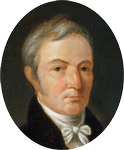 in close connection with the Maritime Museum and the Royal Navy. In actual fact, marine artists had already existed in the Eighteenth Century, and one of the most well-known is William Anderson, who painted the sailings ships arriving in Deptford.
in close connection with the Maritime Museum and the Royal Navy. In actual fact, marine artists had already existed in the Eighteenth Century, and one of the most well-known is William Anderson, who painted the sailings ships arriving in Deptford.
 Oskar Kokoschka, author of a painting of Tower Bridge in 1925, as well as Richmond Terrace in 1926, Waterloo Bridge and a number of views of the Thames. On the subject of landscape views, in 1939, upon the suggestion of the Count of Cork, the Royal Society of Marine Artists was founded, gathering artists specialized in seascape portraits. All the paintings, carried out as watercolours, oil paintings, pastels, or via acrylic technique, and all of the printed material was to follow one rule: to have the common theme of the sea. These ranged from en plein air works to topographic ones, others still were of historical nature or paintings in the style of still life. One of the exhibitions was the Sea Power, under the patronage of King George VI,
Oskar Kokoschka, author of a painting of Tower Bridge in 1925, as well as Richmond Terrace in 1926, Waterloo Bridge and a number of views of the Thames. On the subject of landscape views, in 1939, upon the suggestion of the Count of Cork, the Royal Society of Marine Artists was founded, gathering artists specialized in seascape portraits. All the paintings, carried out as watercolours, oil paintings, pastels, or via acrylic technique, and all of the printed material was to follow one rule: to have the common theme of the sea. These ranged from en plein air works to topographic ones, others still were of historical nature or paintings in the style of still life. One of the exhibitions was the Sea Power, under the patronage of King George VI,  in close connection with the Maritime Museum and the Royal Navy. In actual fact, marine artists had already existed in the Eighteenth Century, and one of the most well-known is William Anderson, who painted the sailings ships arriving in Deptford.
in close connection with the Maritime Museum and the Royal Navy. In actual fact, marine artists had already existed in the Eighteenth Century, and one of the most well-known is William Anderson, who painted the sailings ships arriving in Deptford.


